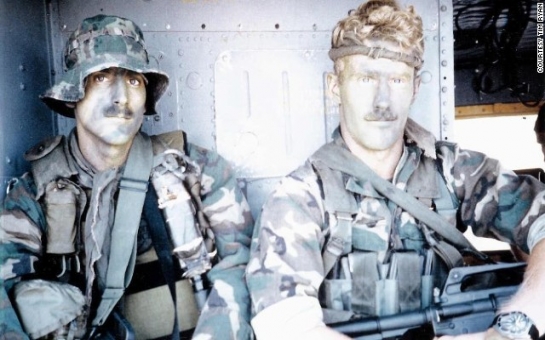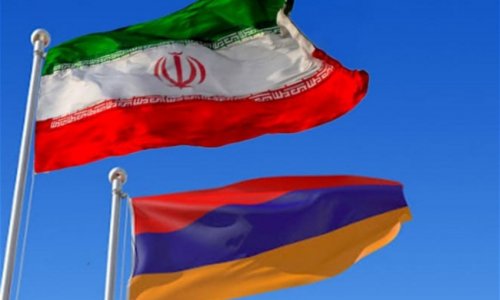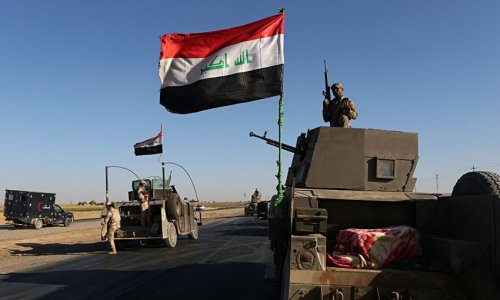The rubber seals on our dry suits squeezed our necks like boa constrictors. When I tried to follow Stan out of the helicopter door to jump into the cold, dark waters of the North Atlantic, there was a loud "chunk" as I was yanked backward by the gunner's safety strap, which I'd forgotten to unhook."Nice!" the flight engineer yelled as he shook his head. I handed him the belt and jumped.In my training to become a U.S. Air Force Pararescueman (otherwise known as a 'PJ'), they taught us to time the waves when jumping from a helicopter, so you landed on the crest rather than in the trough. The difference could be 20 feet in heavy seas. Water has the hardness of concrete if you hit it with too much velocity. The pilots would typically try to get us down to 10 or 15 feet above the level of the sea.I couldn't wait. I had to get out quickly or risk being separated from Stan.When I hit, the force nearly ripped my fins off. The deep plunge into the 50-degree water took away my breath. I kicked hard to get to the surface. I breached with a closed-fist above my head. This signaled the crew in the 25-ton helicopter hovering over us that I was OK.The rotors generated 100-mph winds as the helo departed and set up for the hoist pattern. The taste of salt and rolling swells enveloped me. The helicopter grew smaller, its beating cacophony replaced by a lonely silence. I swam to Stan. The embarrassed look I wore under my SCUBA mask disappeared mid-stroke when I saw her body.The search for survivorsIt was 29 years ago this week. I was a member of the U.S. Air Force's 67th ARRS Pararescue team. I was trained to find survivors anywhere on Earth and bring them back alive. Sometimes that wasn't possible. Instead you came back with the only thing you could -- closure for the victims' families. You brought home the bodies.That was the case for Air India Flight 182 that Sunday in June 1985.Stan Sanders called me that morning and told me to "get to work and get ready, there's a 747 down off the coast of Ireland."Stan and I had been stationed together for three years. He was my good friend and mentor. We had both recently moved from Northern California to the Royal Air Force base at Woodbridge, in Suffolk County, England. My wife and I had returned from our honeymoon the night before. It was her first morning in England.Watching the world's rescue efforts this year in the desperate search for the missing Malaysia Airlines Flight 370 brought these 29-year-old memories to the surface for me. As we mark the anniversary of the Air India crash, we should remember those 329 individuals lost."So That Others May Live"It was a six-hour helicopter ride from RAF Woodbridge to the crash site. I sat in the back and watched as the sun flickered through the rotors with a strobe light effect. The cabin vibrated, it was hot, and it smelled of hydraulic fluid and jet exhaust. We prepped our gear.Surely with 329 people on board there would be survivors?Brian StephensThe atmosphere was hopeful. Surely with 329 people on board there would be survivors? I imagined life rafts full of survivors waving. This is why we became PJs. Our unit's motto was the definition of service: "So That Others May Live." With fewer than 500 team members, Pararescue is one of the smallest Special Forces units in the United States military. The selection process is considered one of the toughest. As an indicator of the high regard for Pararescuemen within the Special Operations community, the Navy's SEAL Team Six incorporates PJs for their unparalleled rescue expertise.During the flight, we discussed deployment scenarios. We'd focus our efforts on the survivors first and then bodies. That hope disappeared when we reached the debris field. Our full crew of seven knew it instantly. Nobody survived this.I leaned my forehead against the scratched oil stained Plexiglas window to get a better look. The debris scattered on the water looked as if someone had crushed the airplane into a bowl of soup. No single piece was larger than two seats floating together. I could feel the excitement we had for the mission give way to the recognition of the human tragedy we were witnessing. It was gut-wrenching.The HH-53 flew across the debris field. On one pass I saw something brown and white floating on the surface. Was it a body? As we got closer the details became clear, puffy ears, dark eyes, arms outstretched — a teddy bear -- floating face up. We looked at each other."A body," someone said over the intercom. "Right side, close in." That's when Stan and I went into the water and swam to her.She was a young Indian woman, in her early 20s. Her clothes were in shreds; a thin white blouse with a white camisole tank underneath. Her hair and the remains of the blouse undulated in the water. She floated face down between us. I touched her arm. No reaction. Her skin was cold and hard. I looked at her and wished she would turn her head and take a breath. It seemed very strange to me that she wasn't breathing.The trauma she suffered became evident. I could feel fractures in her vertebrae grating as the swells lifted us up and set us back down. The three of us rose, and fell rhythmically, suspended in 6,000 feet of water. We were 90 miles off the coast of Kerry, Ireland.Stan and I held her in the water between us. We waited for the helicopter to come back.Disaster at 31,000 feetI learned that injury patterns determined that the plane had broken up at altitude, tossing bodies into the sky at 31,000 feet while moving at 580 miles per hour. None of the 131 bodies recovered was wearing a life jacket. The victims had no time to prepare.The helicopter flew directly over us and the crew lowered a steel-tubed litter wrapped in a chicken wire skin. It had flotation devices and carabiners attached to metal lift cables. We fumbled around, moving straps and opening the cables. It wasn't easy controlling the body in the swells as the helicopter created chaos around us.After a few failed attempts, Stan had had enough. In one explosive movement, he pulled the body by the hair, face down, across the length of the litter. I cringed thinking how it would have felt. It was brutally effective. It was not the way we'd practiced hundreds of times with live volunteers. Stan had shown me in an instant what we had to do. We didn't have time to be gentle.Stan later told me that he pulled the woman into the litter quickly for another reason; he had heard that the RAF crews had spotted sharks in the area.As the cable tightened, it pulled the litter skyward. The pilots flew a long downwind pattern so that the flight engineers could get the body out of the litter and get the cable back down to us.After 30 minutes in the freezing water our exposed faces were numb. At this temperature, even if anyone had survived the impact, it's doubtful they would have survived long enough to be rescued. I learned later that the first ships were onsite within two hours of the crash. The debris field was 4.5 miles long. Dozens of bodies were visible then. By the time we arrived eight hours later, the young woman in the flowing blouse was the only body we found.The next day the wind and waves moved the debris field across 20 miles of ocean. Only one male infant's body was found that second day. His was the last body to be recovered.When the bird returned for us, we attached ourselves to a mechanical seat and were hoisted up. We both reached up to the aircraft to clear ourselves from antennas that hung along the bottom of the HH-53. Inside, I pulled at the rubber seal around my neck. It was still strangling me, but at least I was dry — and I hadn't made any more mistakes while trying to get this young woman back to her family.Once inside, I looked to my left and I saw her face for the first time. When the flight engineer had emptied the litter, they left her lying on the floor under the left window. She was inches from me. Stan reached across and turned the body over, face down. We got up off the floor and got back to work.Saving families from lifetime of uncertaintyWe spent the next hour recovering bodies from a container ship. Stan lowered onto the ship and began loading bodies, three at a time onto the litter. We were pushing the limits of the cable and hoist capacity with each load. The container ship didn't have body bags so they used clear plastic garbage bags. The images were surreal, 500-pound litter loads of broken bodies. Condensation and seawater caused faces to become fuzzy and dreamlike with barely recognizable features. Faces. Hands. Shredded clothing. The plastic diffused the angulated bodies. Funhouse mirrors in a sad carnival of death.Onboard the helicopter, I struggled for a handhold in the plastic and lifted and carried each bag 35 feet back into the cabin. I thought of my youth, baling hay on my grandparents' farm in Cuba City, Wisconsin. Wet bales were always the heaviest. Dead weight. Some bags were incredibly difficult to carry. Others, I could carry with one hand.I thought I'd be saving lives. Yet ... I was saving families from a lifetime of uncertainty.Brian StephensThe floor of the helicopter was now slick with blood, gore and seawater. It mixed with the hydraulic fluid that always leaked from the HH-53's aging hydraulic system. We recovered 16 more bodies from the ship and headed for the Cork Airport, which was a two-hour flight away.The crew was standing with their backs to the forward bulkhead. Everyone was looking back at our silent passengers. It was getting dark. We'd been flying for eight hours with two more to go. I was smoked. I moved aft toward the bodies wrapped in plastic and I lay down on seats suspended from the cabin wall. I was completely surrounded by death.Irish sailors at a navy base in Cork unload debris from Air India Flight 182 that crashed off the coast of Ireland on June 23, 1985.Irish sailors at a navy base in Cork unload debris from Air India Flight 182 that crashed off the coast of Ireland on June 23, 1985.I remember feeling drawn to them. I wanted them to know I wasn't afraid. I was there for them. They weren't alone, and soon we would have them back to their families. It's not the mission I thought it would be. I thought I'd be saving lives. Yet in a way, maybe I was. I was saving families from a lifetime of uncertainty, of not having to wonder, where in the deep Atlantic did their loved one rest?Exhausted, I began to fall asleep. Rocked by the rotor head's vibrations. I noticed a plastic bag across the cabin from me, at eye level. It had a perfectly round hole in it the size of a quarter; a single woman's finger protruded. The finger was adorned with a ring and her fingernail was red. The ring and her manicure looked expensive. Maybe it was my exhaustion, but I reasoned that the finger through that hole wasn't a coincidence. I focused harder willing it to move. I watched for any sign of life in her plastic cocoon. I prayed for her to move. My eyes shifted across the dimming scene of faces and distorted bodies that played out behind the thin plastic walls in front of me. As I watched for life, I fell asleep amongst 17 of the 329 dead from Air India flight 182.Terrorist fears and high securityAs we taxied in to Cork Airport I could see armored personnel carriers with troops manning machine guns, power carts with bright lights, lots of uniformed people and multiple rescue aircraft from the RAF and the USAF taxiing, parking and shutting down. Ambulances everywhere. It reminded me of a scene from the Ridley Scott film "Blade Runner": futuristic, somber, and dangerous. Weapons everywhere. It's important to remember why the armed precautions were being taken.Expecting that this may have been a terrorist act, the security levels were high. Reading through the newspaper articles, I was reminded of the historical context. Another 747 had been bombed that same day, in Tokyo. Luckily the bomb went off on the ground and the loss of life was much less.The Buckingham Palace staff had recently been evacuated when an IRA bomb was found nearby. Forty-one Americans were being held hostage in Beirut after being hijacked. It's easy to look back and see why the people manning those weapons looked very serious.We parked, and after nearly 11 hours of flight, shut down. We were met by groups of Irish military and civilian medical teams to help us move the bodies.Each body was gently moved from the helicopter onto a litter, and a green blanket was placed over them. The blankets hid the plastic distortions and the shapes became human again. The attendants smoothed the blankets and carefully carried them off into the night. The people took the bodies and treated them as if they were our family members. We never said a word.After a few days, I was able to make it back home, and while lying in bed with my arm draped across my wife's warm back, I thought of holding the cold, broken body of the young woman in the North Atlantic. She was about the same height and age as my wife. I quietly wept for her but also felt relieved that she did not remain long in that lonely place. We brought her home.Canada led investigationCanada, as the originating country for Flight 182, had jurisdiction over the investigation. It was believed to be a Sikh militant group's retribution bombing for an earlier Indian Army anti-terrorist operation. Hindus were being targeted on Flight 182 and unbelievably on another flight that same day in Narita, Japan. Luckily that explosion occurred after the plane had landed 15 minutes early just as the luggage and passengers were being off-loaded.We all need to know how the story ends.Brian StephensTwo baggage handlers died in the Narita explosion that could have downed the aircraft killing hundreds more. Canada spent 20 years and millions of dollars seeking justice. However, only one person ever served a sentence for these 331 deaths. Those sentences included 15 years for two counts of manslaughter and building the bombs used in both attacks. In 2003, an additional nine years were added for perjury during trial testimony where two other suspects were eventually acquitted.In the presiding justice's final conclusion of the acquittal trial he states, "I began by describing the horrific nature of these cruel acts of terrorism, acts that cry out for Justice...". He further stated that the police and the Crown did not meet the requisite standard of proof "despite the best and most earnest efforts".As an eyewitness to the events that day, I can say with absolute certainty that justice was not served.29 years laterI've retired from the Air Force but often think about the work we did during the Air India incident. As I reread the articles I collected, I discovered that one RAF crew had recovered a doll, initially thinking it was a body. It made me regret that we hadn't recovered the teddy bear as a reminder of the child that it belonged to. I remember catching sight of the bear floating underneath the helicopter, right before jumping. Maybe that, not the neck seal, was the distraction that made me forget to undo the gunner's belt.Now, 29 years later, I type, "Air India Flight 182 Teddy bear" into an Internet search engine. I find an article stating that in addition to the doll recovered by the RAF, there was also a "bedraggled Teddy Bear" pulled from the sea. I smiled, not fully realizing until that moment, the importance of closure. I hope the search for the Malaysian flight continues until those families have theirs. We all need to know how the story ends.(CNN)Bakudaily.az
Jumping into a search for jet crash survivors
World
16:00 | 23.06.2014

Jumping into a search for jet crash survivors
"Terrorist bombers were last night believed responsible for the Air India jumbo jet crash off of the Kerry coast in which 329 people died." -- Irish Independent, June 24, 1985.
Follow us !










